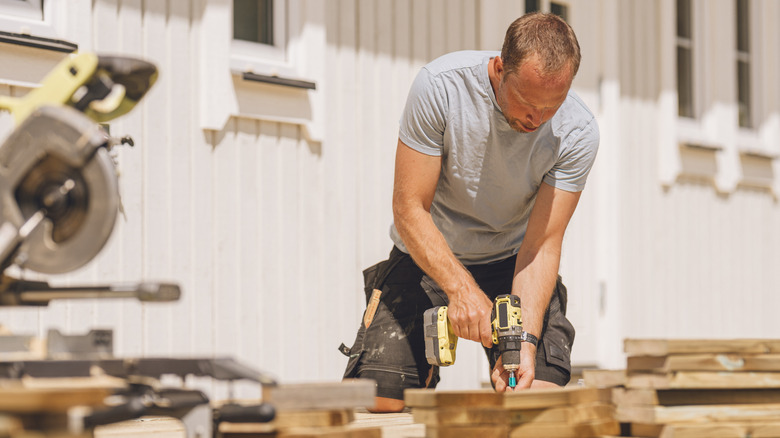Impact Driver Vs. Regular Drill: How To Choose Which Tool Is Best For You
We may receive a commission on purchases made from links.
If you compare an impact driver with a regular drill from pretty much any power tool manufacturer, the body and grip might look similar, but you'll soon notice a difference at the front end. An impact drill is usually shorter, with a stubby connector (called a collet) that holds hex bits. By comparison, a regular drill has a self-centering keyless chuck tightened or loosened by hand.
Any list of must-buy power tools for first-time homeowners will usually feature a standard power drill at or near the top. For people taking on basic DIY tasks around their home and yard, a standard drill is a good choice to accomplish most projects. A power drill can drill holes, of course, but it can also drive screws. The numbered ring between the chuck and the main body is a clutch that allows you to adjust the amount of force used for any function.
If you check out the four top-rated drills to tackle any home project, you'll find that only one of them is an impact driver. While it's not as common as a standard power drill, an impact driver can also be an indispensable tool. An impact driver takes over when a regular drill struggles, for example, with long screws or nuts and bolts. The impact driver exerts much higher torque (twisting force) than a standard drill and adds a hammer action for even greater turning power. As a result, it's ideal for lag bolts, decking screws, and other heavy-duty hardware. If you regularly work with multiple fasteners or you're building large structures, an impact driver will often be better for you than a regular drill.
Standard drills are versatile, but impact drivers offer more torque
It should be no surprise that there are hundreds of impact drivers and regular drills to choose from. If you're planning to only use power tools occasionally, the budget end of the market has plenty of options. For example, we tried the cheapest cordless drill at Home Depot, a Ryobi, and while it had some flaws, it would be perfectly adequate for most home uses. Those who would rather invest in a brand renowned for its high quality should check out the DeWalt 20V Max Cordless Drill Driver Kit. It's not their latest model, but over 50,000 buyers give it an average 4.8-star rating on Amazon, and it's great value.
Key specs to look at for an impact driver are torque and impacts per minute (IPM). Lower-priced tools tend to require the user to squeeze the trigger and hold on, whereas more expensive models offer several speed settings for greater control. You don't necessarily need maximum power in an impact drill; investigate the kind of tasks each tool is suitable for before you decide on the right impact drill for your needs. An impact driver can be used like a regular drill, but it's not really designed for this purpose. It's important to know that there are chuck adapters for impact drivers so they can drill holes. However, most of these tools deliver so much power that damage to accessories and drill bits is a common problem.
In fact, you could argue that it shouldn't really be a question of choosing one or the other. Ideally, you should aim to have both an impact drill and a regular drill in your collection. A regular drill will always be the best choice for most, but home mechanics, engineers, and serious DIY enthusiasts will also benefit from having an impact driver in their kit.

